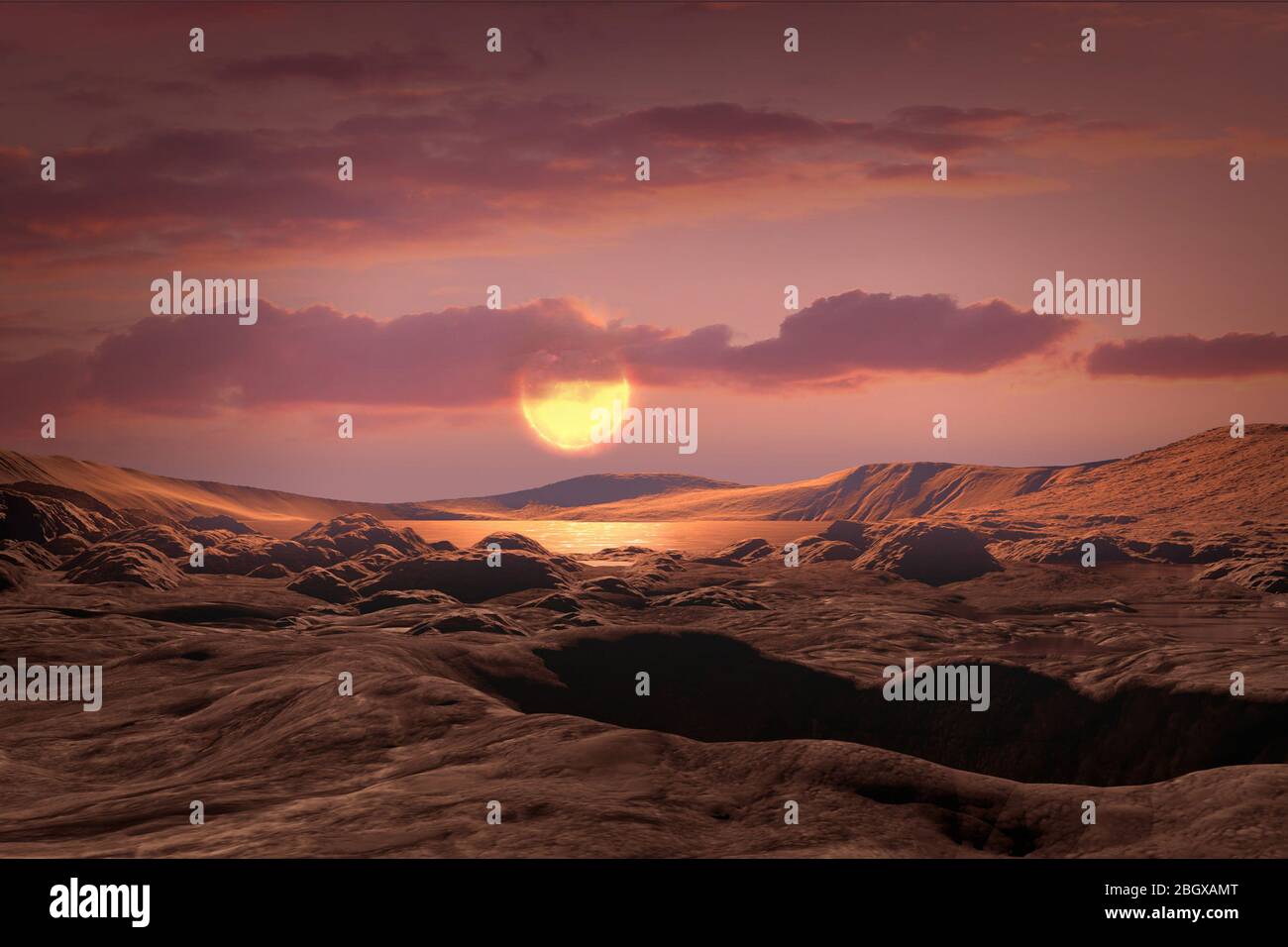A team of transatlantic scientists, using reanalyzed data from NASA's Kepler space telescope, has discovered an Earth-size exoplanet orbiting in its star's habitable zone, the area around a star where a rocky planet could support liquid water. This artist's illustration shows what Kepler-1649c could look like from its surface. Scientists discovered this planet, called Kepler-1649c when looking through old observations from Kepler, which the agency retired in 2018. While previous searches with a computer algorithm misidentified it, researchers reviewing Kepler data took a second look at the sig

Image details
Contributor:
UPI / Alamy Stock PhotoImage ID:
2BGXAMTFile size:
30.5 MB (721.7 KB Compressed download)Releases:
Model - no | Property - noDo I need a release?Dimensions:
4000 x 2667 px | 33.9 x 22.6 cm | 13.3 x 8.9 inches | 300dpiDate taken:
22 April 2020Photographer:
UPIMore information:
This image could have imperfections as it’s either historical or reportage.
A team of transatlantic scientists, using reanalyzed data from NASA's Kepler space telescope, has discovered an Earth-size exoplanet orbiting in its star's habitable zone, the area around a star where a rocky planet could support liquid water. This artist's illustration shows what Kepler-1649c could look like from its surface. Scientists discovered this planet, called Kepler-1649c when looking through old observations from Kepler, which the agency retired in 2018. While previous searches with a computer algorithm misidentified it, researchers reviewing Kepler data took a second look at the signature and recognized it as a planet. Out of all the exoplanets found by Kepler, this distant world – located 300 light-years from Earth – is most similar to Earth in size and estimated temperature. NASA/UPI